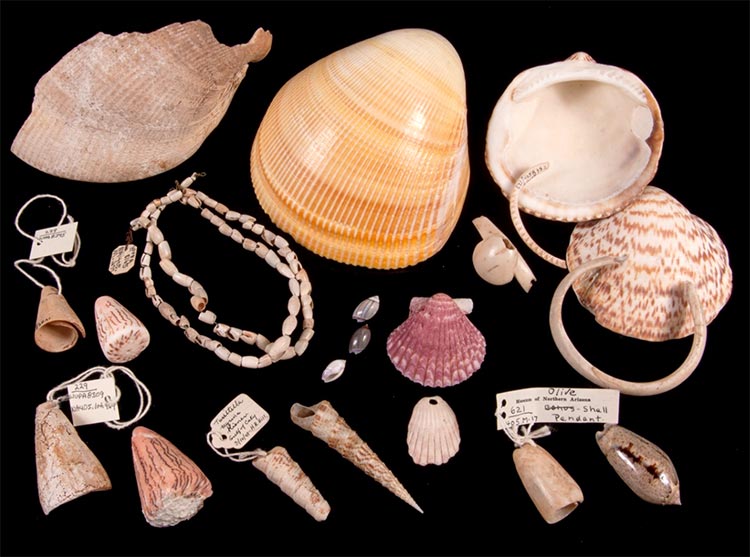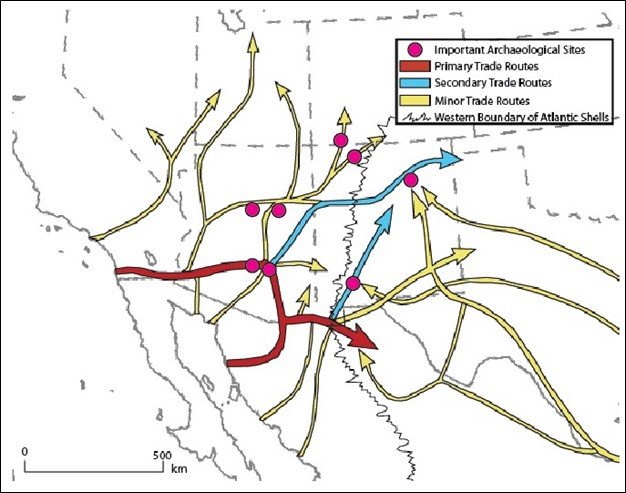Alex Covert, Archeologist

Trade was essential to prehistoric people. Not only were utilitarian items traded, but also prestige goods, such as shell. Finding marine shells in non-coastal locations signifies both trade as well as long-distance transportation. Studying marine shells allows archaeologists to trace prehistoric exchange networks.
Typically, with prehistoric trade, people exchange non-prestige utilitarian items within a short distance of their occupation area and trade prestige goods, such as shells, amongst different prehistoric groups spanning hundreds of miles.
Therefore, trade plays a significant role in the socio-political complexity between and amongst prehistoric groups. The presence of a large shell assemblage at Wupatki Pueblo suggests strong trade relations between Ancestral Puebloans and other prehistoric cultural groups.
Previous research conducted on prehistoric shell trade routes determined trade routes from the Gulf of California, the coast of California, and the Gulf of Mexico to northern Arizona. There are several different plausible trade routes of shell from the Gulf of California to northern Arizona.
People could have carried shells from the Gulf of California to the region of the Hohokam and then north. The shell also could have traveled from the Gulf of California to Papaguería to the Hohokam and then to northern Arizona.
Shell traded from the Gulf of Mexico would either first go to southwestern New Mexico, travel northwest to the Hohokam, and then travel north or the shell would travel first to the middle of New Mexico, west across the border into Arizona, and then north to northern Arizona.
These trade routes suggest that there were several different pathways for shell trade to occur to northern Arizona and that through these pathways trade between different prehistoric cultural groups occurred.


